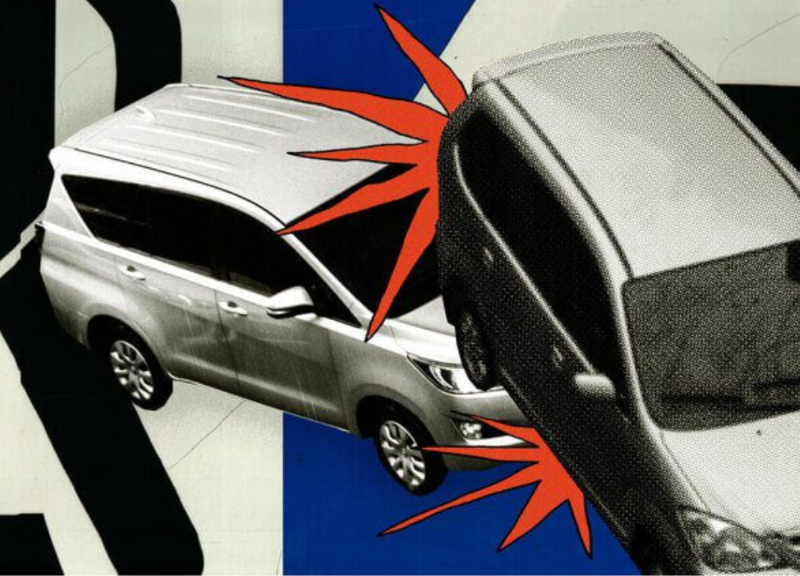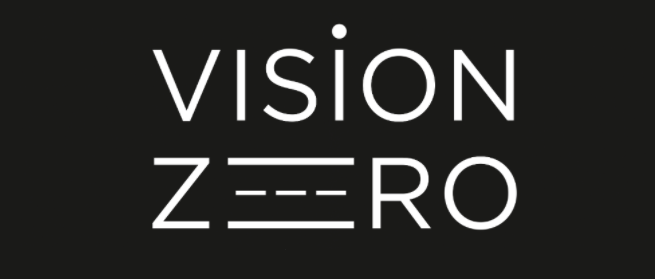The Road Safety Administration provides the public with false data on road accidents, injuries, and fatalities. The statistics for 2016 are significantly distorted in an understated manner, and this distortion is systemic and widespread. As a result, Ukraine’s official data on road accidents in 2016 cannot be trusted at all. The real number of road deaths last year is unknown and may exceed 5,000 people instead of the stated three.
These are the conclusions of a selective verification of official accident statistics in Ukraine in 2016, conducted by volunteers of the non-governmental organization “Vision Zero”, who collected two sets of evidence through open access tools. As a result of a selective verification using OSINT (Open Source Intelligence) techniques, volunteers found 14 pieces of evidence that the accident statistics published by the Road Traffic Safety Administration (RTSA) in 2016 do not correspond to reality. In addition, a selective reconciliation of RTSA data with data from regional police departments was conducted using the information request mechanism. This reconciliation provided three additional pieces of evidence that the RTSA data are biased towards understatement.
We invite you to familiarize yourself with our report and its annexes. We would be glad to hear comments and information about any inaccuracies you may have noticed. http://www.slideshare.net/viktoza/ss-72173641
You can download PDF files of the report and 18 appendices from the links below:
Main report file (6 pages): Fake_Road_Safety_Statistics_in_Ukraine_Report
Appendices: 1_Sources of Official Data
2_Kharkivska_September_2016
3_Kharkivska__October_2016
4_Kharkivska_November_2016
5_Kharkivska_December_2016
6_Ternopilska_October_2016
7_Khersonska_December_2016
8_Kirovohradska_December_2016
9_Khmelnytska_September2016
10_Khmelnytska_October2016
11_Khmelnytska_December2016
12_Zakarpatska_October_2016
13_Transcarpathia_November_2016
14_Zakarpatska_December_2016
15_Chernivetska_September_2016
16_GUNP_Kyivska_oblast
17_GUNP_Odeska_oblast
18_GUNP_Zakarpatska_oblast
We love to explore and measure everything. Especially things that no one has measured before us. So when we were on a business trip from Frankivsk to the south of Ukraine, we conducted a trial study of the level of use of daytime running lights or dipped headlights. After all, this is the requirement of the Traffic Rules:
"From October 1 to May 1, all motor vehicles outside of populated areas must have daytime running lights turned on, and in the absence of them in the vehicle design, dipped headlights" - Article 9.8 of the Traffic Rules of Ukraine
The study was conducted using the observational study method. The form for collecting information was made right on the go. We counted continuous samples of at least 100 cars, outside of settlements. We counted trucks and buses separately to see if there would be a deviation from the total mass, because freight and passenger carriers are objects of special state regulation in the field of traffic safety. The count was carried out from January 31 to February 2 in three districts, the sample was 967 units. For interest, we also counted Molodova (sample of 356 units).
Do you have any comments or concerns about this pilot study?
The media has recently been discussing the issue of possible changes in the practice of checking the health of future drivers of categories A and B. We have always been confused by the fact that the certificate system is a large and entrenched corruption scheme, and that these "medical examinations" and "certificates" are unlikely to have any positive impact on road safety. Therefore, we decided to make
a statement regarding the EU recommendations in this area (
download a 2-page PDF file ), looking at the issue through the prism of road safety. This statement has already been sent to responsible officials in the Ministry of Internal Affairs of Ukraine, and will be sent to the Ministry of Health and the relevant committee of the Verkhovna Rada. We are currently publishing this information for public access and discussion. ====
European standards and practices regarding the health check of Group 1 driver candidates (categories A and B)
06.02.2017, NGO “Vision Zero”, www.visionzero.org.ua The practice of the European Union divides drivers into two groups. Group 1 includes drivers of private cars and motorcycles, Group 2 includes drivers of trucks and buses. Different standard requirements apply to these groups regarding the control of medical condition, validity period and conditions for renewal of driving licenses (Directive 2006/126/EC , Annex III), in particular, for Group 2 the requirements are much stricter due to the significantly higher risks that health disorders can lead to while driving this vehicle. For truck drivers, the risks are greater due to the significantly higher mass of vehicles, which leads to a longer braking distance and a greater impact of physical forces on other road users in the event of a collision or hit, and therefore a greater likelihood of serious consequences (death, serious injuries). For buses, the increased risks are linked to the mass of the vehicles, as well as to the number of people carried by these vehicles, and to the fact that buses frequently stop in crowded places. This information provides an overview of the EU standards and requirements for Group 1, which is subject to less stringent requirements, proportionate to the lower risks to road safety. The EU Directive and the practice of the Member States provide that candidates for drivers who are first issued with a driving licence or who are renewing it, “...shall be required to undergo a medical examination if it becomes apparent, when the necessary formalities are being completed or during the tests which they have to undergo prior to obtaining a driving licence, that they have one or more of the medical disabilities mentioned in this Annex.” That is, a medical examination is not a general requirement for Group 1, but may be imposed by the licensing authority in certain specific cases. A mandatory requirement for driver candidates is a vision test based on a list of parameters (visual acuity, field of vision, twilight vision and progressive eye diseases). There is also a list of diseases and restrictions under which a license cannot be issued or is issued under special conditions. These disorders can be divided into two categories:- Which can be detected by a licensing authority employee during the process of applying for a certificate and passing tests. These are disorders of the musculoskeletal system, speech, hearing, vision, etc.;
- Which cannot be detected by a service center employee, for example, arrhythmia, drug and alcohol addiction, some mental and neurological disorders.
To minimize risks from a road safety perspective, in both cases the licensing authority may:- Require a candidate driver to declare whether they have or have had any of the listed disorders. If they provide false information about the absence of such disorders, the person may be held liable with a significant fine and the non-issuance or cancellation of their driver's license, and in the event of an accident due to the presence of the disorder, the person may be held criminally liable
- Independently check for the absence of certain disorders, for which individual service center employees must undergo special medical training. This may include on-site vision testing using special equipment, as is done in the USA.
- Independently check whether a person is registered as a drug or alcohol addict, between the time of submitting an application for a driver's license and making a decision. Ideally, this should happen instantly through electronic databases, but initially it can happen manually, for example, the applicant may be able to either provide a certificate of non-addiction, or service centers themselves check this through communication with medical institutions, but this adds several days to the process.
- Send a person for a mandatory medical examination (general or special - neurologist, cardiologist, etc.) in case of self-declaration of disorders or suspicions of employees about the presence of disorders included in the list, or in case the person had disorders when the driver's license was previously issued, or after reaching an age threshold, for example, 60 years.
- Issue a driver's license under special conditions, for example, one that has a reduced validity period (1,2,3,5 years), or one that allows driving only in specially equipped vehicles, or only under special conditions (for example, wearing glasses for vision correction).
Practical example: THE UK, one of the world leaders in road safety. The UK government applies the declaratory principle of reporting disorders and liability for providing false data: “You need to tell DVLA about some medical conditions as they can affect your driving. You can be fined up to £1,000 if you don't tell DVLA about a medical condition that affects your driving. You may be prosecuted if you're involved in an accident as a result.” A list of disorders and other explanations can be found on the page: https://www.gov.uk/health-conditions-and-driving Vision standards provide for the need to wear glasses or lenses, as well as mandatory notification to the licensing authority in case of disorders other than myopia, hyperopia or color blindness. Liability is waived for failure to provide information. Details: https://www.gov.uk/driving-eyesight-rules
RECOMMENDATIONS FOR UKRAINE:- Introduce a system of standards for the health check of Group 1 drivers in strict accordance with EU Directive 2006/126, taking the example of the UK and not making the requirements more stringent;
- Abandon the requirement for all driver candidates to undergo medical examinations, retaining it as a requirement for candidates who have self-declared the presence of disorders, and under certain other clearly prescribed conditions;
- Abandon the requirement for candidates to provide certificates of absence of alcohol and drug addiction and mental disorders. It is possible to leave the provision of certificates as a voluntary option if the candidate needs to urgently obtain a driver's license. In other cases, verification of this information should be carried out through communication between service centers and health care institutions;
- Introduce testing for the most important disorders from the point of view of traffic safety directly in service centers, including vision testing. This requires training for center employees and the purchase of equipment;
- Introduce a requirement for a candidate to declare the presence of diseases and disorders included in the approved list, and strict liability for providing false information about this, including criminal liability in the event of a traffic accident;
- Provide for the obligation of service center employees to refer a candidate driver for a medical examination based on clearly prescribed criteria and rules, and liability for failure to fulfill this obligation.
In parallel with these processes, the Ministry of Internal Affairs is proposed, in cooperation with the Ministry of Health, to develop a system of special conditions and privileges for drivers with permanent or temporary health disorders that do not affect the safety of driving, by introducing a system of “Blue Badges” that give the right to park in reserved parking spaces close to the entrances to buildings (“Disabled Motorists’ Spaces”). These “Blue Badges”, following the example of the EU and the USA, can be temporary and issued by medical institutions to persons after surgical operations, etc. This system should be coordinated with international practice and in the future give the right to Ukrainian “Blue Badge” owners to use their privileges abroad, and foreign drivers to use such privileges in Ukraine. Details: http://www.disabledmotorists.eu/en/home/



